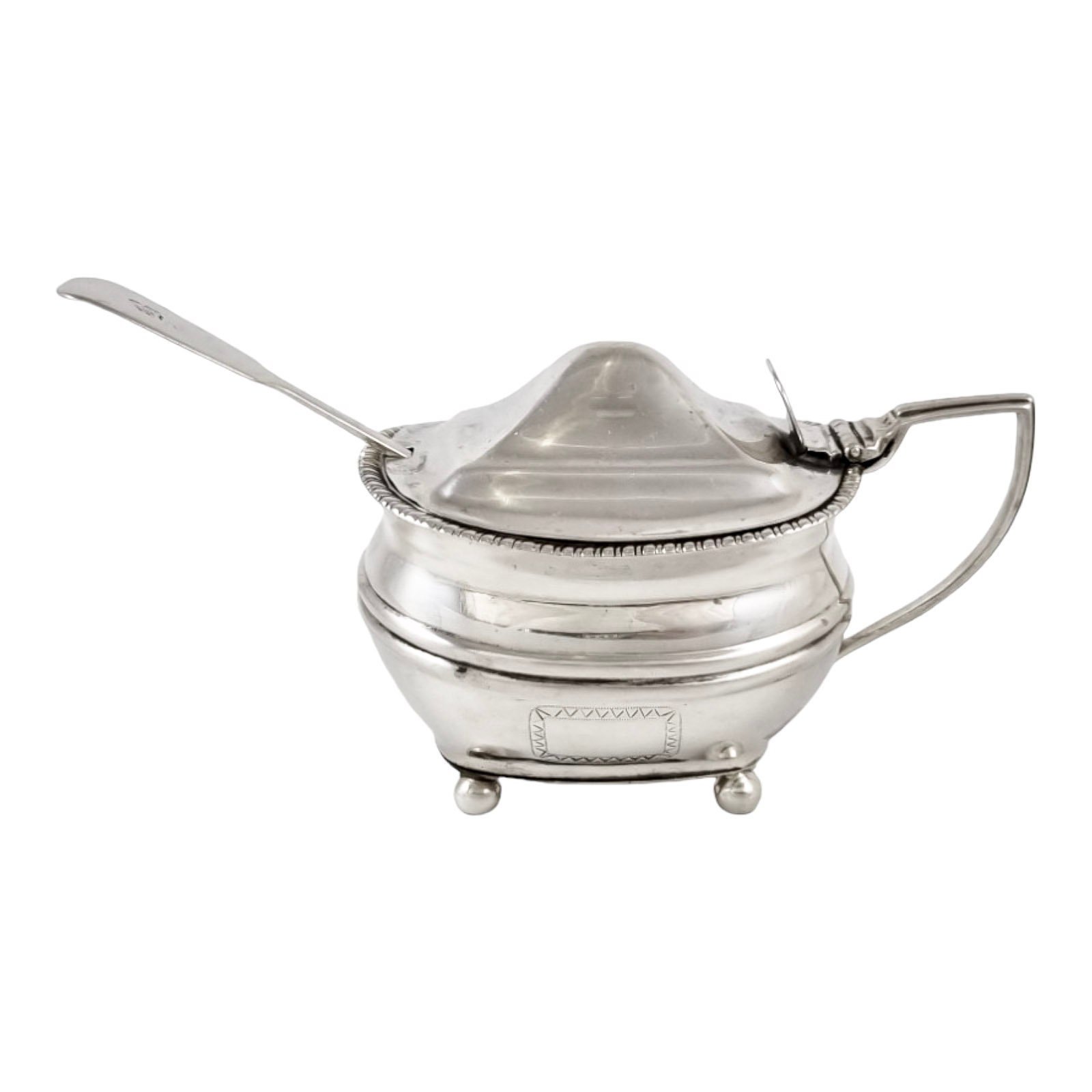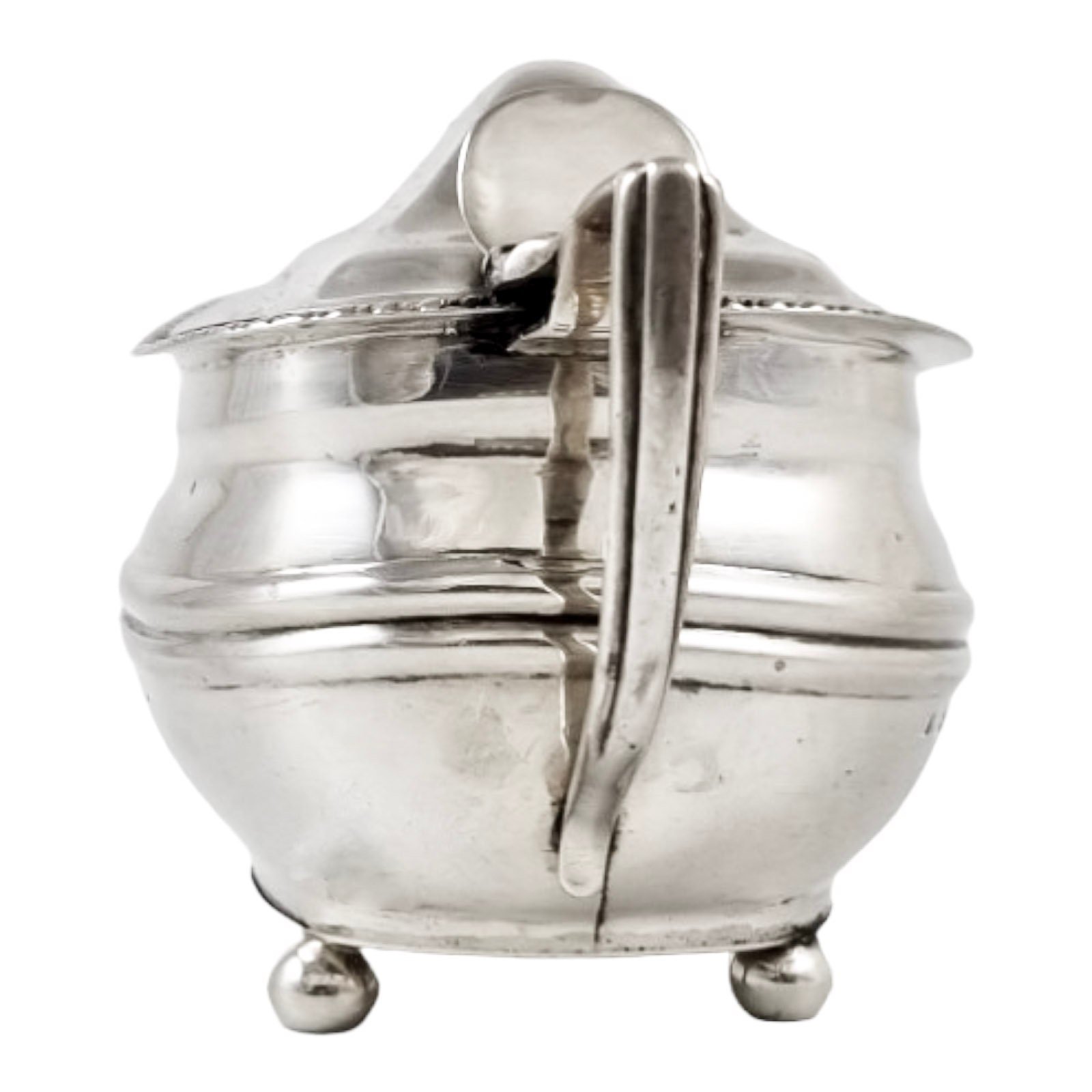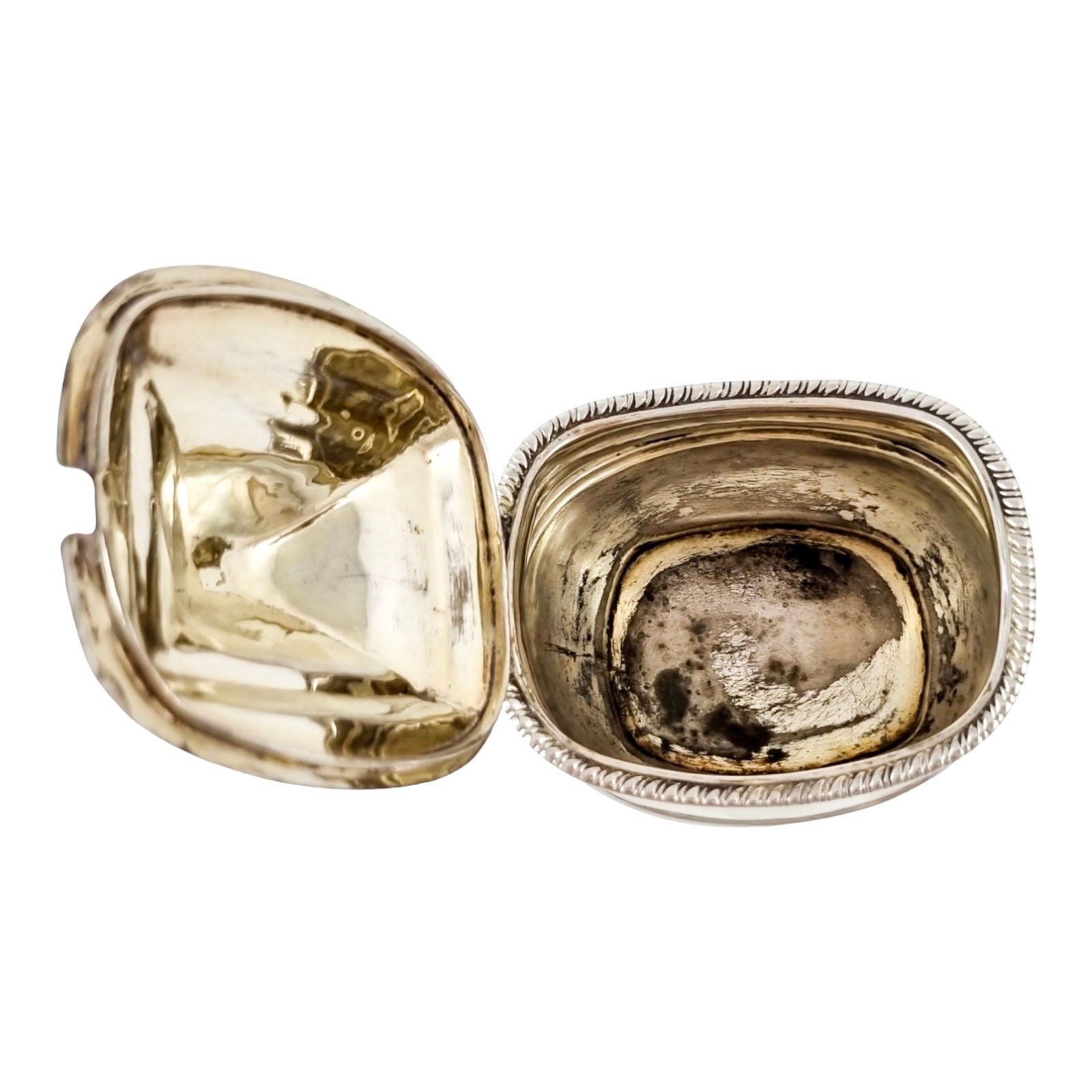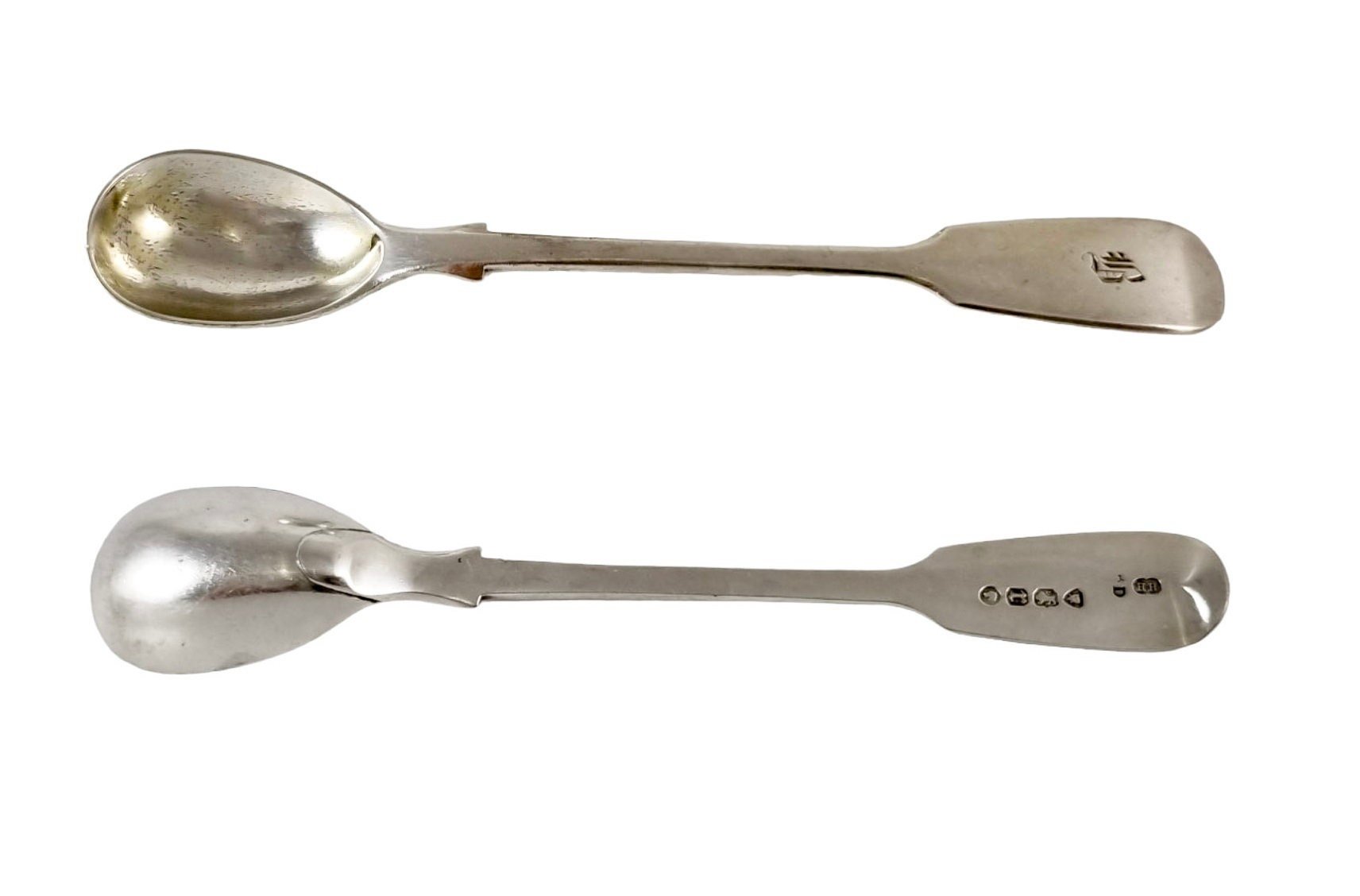 Image 1 of 8
Image 1 of 8

 Image 2 of 8
Image 2 of 8

 Image 3 of 8
Image 3 of 8

 Image 4 of 8
Image 4 of 8

 Image 5 of 8
Image 5 of 8

 Image 6 of 8
Image 6 of 8

 Image 7 of 8
Image 7 of 8

 Image 8 of 8
Image 8 of 8









American 19th century P.L. Krider pair of large gilt silver table salts with ram horn handles and palmettes
Rare pair of large American coin silver two-handled table salts by the Philadelphian silversmith, Peter Lewis Krider. Baluster inverted bodies are engraved with palmettes in Egyptian Revival fashion; the handles are styled like ram horns. The interiors of the pots are gold-washed.
Made by Peter Lewis Krider, Philadelphia, USA, c. 1860’s
120.01 g / 3.86 t oz
5 x 6 x 8.5 cm
Very good antique condition. One pot has a shallow indent and a small ding.
Rare pair of large American coin silver two-handled table salts by the Philadelphian silversmith, Peter Lewis Krider. Baluster inverted bodies are engraved with palmettes in Egyptian Revival fashion; the handles are styled like ram horns. The interiors of the pots are gold-washed.
Made by Peter Lewis Krider, Philadelphia, USA, c. 1860’s
120.01 g / 3.86 t oz
5 x 6 x 8.5 cm
Very good antique condition. One pot has a shallow indent and a small ding.
Rare pair of large American coin silver two-handled table salts by the Philadelphian silversmith, Peter Lewis Krider. Baluster inverted bodies are engraved with palmettes in Egyptian Revival fashion; the handles are styled like ram horns. The interiors of the pots are gold-washed.
Made by Peter Lewis Krider, Philadelphia, USA, c. 1860’s
120.01 g / 3.86 t oz
5 x 6 x 8.5 cm
Very good antique condition. One pot has a shallow indent and a small ding.
Peter Lewis Krider (February 14, 1821 - May 12, 1895), also known as P.L. Krider, was a noted American silversmith, active in Philadelphia. Krider produced large amounts of solid silver flatware and hollowware; he also created society and exposition medals, including award medals for the Centennial Exposition in 1876. His works are collected in the Carnegie Museum of Art and Yale University Art Gallery among other museums.




















































